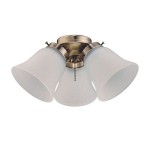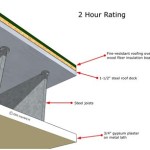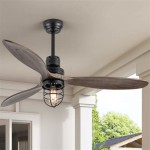Sound Proof Panels for Ceiling: An In-Depth Guide
Noise pollution is a pervasive problem in modern living and working environments. Unwanted sound can disrupt concentration, increase stress levels, and negatively impact overall well-being. Acoustical comfort, therefore, is a growing concern for homeowners, businesses, and institutions alike. One effective solution to mitigate noise issues is the implementation of sound proof panels, specifically those designed for ceiling application.
Ceilings represent a significant surface area within a room, making them prime candidates for acoustic treatment. Sound waves, upon entering a space, can reflect off hard, flat surfaces like ceilings, contributing to reverberation and echoes. Sound proof panels, when installed on the ceiling, absorb these sound waves, reducing the amount of reflected sound and improving the overall acoustic environment. This article delves into the various aspects of sound proof panels for ceilings, exploring their types, benefits, installation methods, and considerations for selection.
Understanding Sound Absorption and Soundproofing
It's crucial to differentiate between sound absorption and soundproofing, as these terms are often used interchangeably but represent distinct concepts. Sound absorption refers to the process of dissipating sound energy within a material, typically converting it into heat. Sound proof panels are primarily designed for sound absorption. They work by utilizing porous materials that allow sound waves to penetrate the panel, where friction and other mechanisms convert the sound energy into other forms. This reduces the amount of sound that is reflected back into the room.
Soundproofing, on the other hand, aims to block sound transmission from one space to another. This involves creating a barrier that prevents sound waves from passing through walls, floors, or ceilings. While sound proof panels can contribute to soundproofing to a certain extent, they are most effective in reducing the reverberation and echo within a single space. For complete sound isolation, additional measures like incorporating mass-loaded vinyl, sealing gaps and cracks, and using resilient channels may be necessary.
The effectiveness of a sound proof panel is often quantified by its Noise Reduction Coefficient (NRC). The NRC is a single-number rating that indicates the amount of sound energy a material absorbs. It ranges from 0.00 (perfect reflection) to 1.00 (perfect absorption). A higher NRC value indicates better sound absorption performance.
Types of Sound Proof Panels for Ceilings
The market offers a wide array of sound proof panels designed specifically for ceiling applications. These panels vary in material composition, size, shape, and aesthetic design. Choosing the right type of panel depends on the specific acoustic needs of the space, budgetary constraints, and aesthetic preferences. Some common types include:
* Acoustic Foam Panels: These are typically made from open-celled polyurethane foam. They are lightweight, relatively inexpensive, and available in various shapes and thicknesses. Acoustic foam panels are effective at absorbing mid-to-high frequency sounds, making them suitable for home studios, offices, and classrooms. They are often shaped with convoluted surfaces, such as wedges or egg crates, to increase the surface area for sound absorption. * Fabric-Wrapped Fiberglass Panels: These panels consist of a fiberglass core wrapped in a fabric covering. Fiberglass provides excellent sound absorption across a broad frequency range, while the fabric covering allows for customization in terms of color, texture, and pattern. Fabric-wrapped fiberglass panels are commonly used in commercial spaces, theaters, and conference rooms due to their acoustic performance and aesthetic versatility. * Wood Acoustic Panels: Wood acoustic panels offer a combination of sound absorption and visual appeal. They can be made from solid wood, wood veneers, or composite materials. The panels often feature perforations, slots, or grooves that allow sound waves to enter and be absorbed by the underlying material. Wood acoustic panels are often used in auditoriums, concert halls, and restaurants to create a warm and visually appealing acoustic environment. * Acoustic Baffles: Acoustic baffles are typically suspended vertically from the ceiling. They are lightweight and offer excellent sound absorption from both sides. Baffles are particularly effective in large, open spaces with high ceilings, such as gymnasiums, factories, and warehouses. They come in various shapes, sizes, and materials, including fabric-wrapped fiberglass, foam, and mineral wool. * Acoustic Clouds: Acoustic clouds are similar to baffles but are typically larger and more visually appealing. They are suspended horizontally from the ceiling and can be used to create a focal point in a room while providing effective sound absorption. Acoustic clouds are often used in offices, restaurants, and lobbies. * Drop Ceiling Tiles: These are designed as replacements for standard drop ceiling tiles and offer improved acoustic performance. They are typically made from mineral fiber, fiberglass, or foam and are easy to install in existing drop ceiling grids. Acoustic drop ceiling tiles are a cost-effective solution for improving the acoustics of offices, classrooms, and retail spaces.Key Considerations for Selecting Sound Proof Panels
Choosing the right sound proof panels for a ceiling requires careful consideration of several factors. These factors include the acoustic needs of the space, the aesthetic preferences, the installation method, and the budget. A thorough evaluation of these considerations will ensure that the selected panels effectively address the noise problems and meet the specific requirements of the environment.
* Acoustic Needs: The primary consideration is the specific acoustic problem that needs to be addressed. Determine the type of noise that is causing the issue (e.g., speech, music, machinery noise) and the frequency range of that noise. Different types of sound proof panels are more effective at absorbing different frequencies. For example, acoustic foam panels are generally better at absorbing high frequencies, while thicker fiberglass panels are more effective at absorbing low frequencies. Also, consider the size and shape of the room. Larger rooms with hard surfaces will require more sound absorption than smaller rooms with softer surfaces. * Aesthetic Preferences: Sound proof panels are available in a wide range of colors, textures, and patterns. Choose panels that complement the existing decor and create the desired aesthetic. Consider the overall design of the room and how the panels will integrate into the space. For example, fabric-wrapped fiberglass panels can be customized with different fabrics to match the color scheme and style of the room. Wood acoustic panels can add warmth and visual interest. Acoustic clouds can create a modern and stylish look. * Installation Method: The installation method will depend on the type of panel and the ceiling structure. Some panels can be directly adhered to the ceiling using adhesive, while others require mounting hardware such as screws or clips. Consider the ease of installation and the skill level required. For example, acoustic drop ceiling tiles are relatively easy to install in existing drop ceiling grids. Adhesive-backed foam panels are also simple to install. However, installing fabric-wrapped fiberglass panels or wood acoustic panels may require more specialized tools and skills. Verify the ceiling structure is able to support the weight of the panels. * Budget: The cost of sound proof panels can vary significantly depending on the material, size, and performance. Establish a budget and choose panels that offer the best value for the money. Consider the long-term benefits of improved acoustics and the potential for increased productivity and reduced stress. Remember to factor in the cost of installation, including labor and hardware.Beyond these key considerations, it's also important to check for any certifications or ratings that indicate the panel's performance and safety. For example, look for panels with a Class A fire rating, which indicates that they are fire-resistant. Also, consider the environmental impact of the panels. Choose panels made from sustainable materials or that are recyclable.
Installation Methods for Ceiling Sound Proof Panels
Proper installation is crucial for maximizing the effectiveness of sound proof panels. The installation method will vary depending on the type of panel and the ceiling structure. It's always recommended to follow the manufacturer's instructions for installation. Some common installation methods include:
* Adhesive Application: This method is commonly used for lightweight panels such as acoustic foam. Apply a suitable adhesive to the back of the panel and press it firmly against the ceiling surface. Ensure the surface is clean and dry before applying the adhesive. It is essential to use an adhesive specifically designed for acoustic panels to avoid damaging the panel or the ceiling. * Mechanical Fasteners: Heavier panels, such as fabric-wrapped fiberglass and wood acoustic panels, typically require mechanical fasteners such as screws or clips. Use appropriate hardware for the ceiling material (e.g., drywall, concrete, wood). Locate studs or joists to ensure a secure attachment. Mechanical fasteners ensure the panels are securely attached and prevent them from falling. * Suspension Systems: Acoustic baffles and clouds are typically suspended from the ceiling using wires or cables. Attach the suspension hardware to the ceiling structure and then hang the panels at the desired height. Ensure the suspension system is properly installed and can support the weight of the panels. A professional installer is often recommended for suspension systems. * Drop Ceiling Grid Replacement: For acoustic drop ceiling tiles, simply remove the existing tiles and replace them with the acoustic tiles. Ensure the new tiles fit properly into the grid and are securely in place. This is a straightforward and relatively easy installation process.Before installing any sound proof panels, it's essential to plan the layout and placement. Consider the primary source of noise and position the panels strategically to absorb the sound waves. It can be helpful to create a layout plan on paper or using a computer program to visualize the placement of the panels. For optimal performance, it is recommended to cover as much of the ceiling surface as possible. Professional acoustic consultants can also provide guidance on placement to maximize the effectiveness of the sound proofing efforts.
In summary, sound proof panels for ceilings offer an effective solution for improving the acoustic environment of any space. By understanding the different types of panels, considering the acoustic needs of the room, and following proper installation methods, individuals and businesses can create a more comfortable and productive environment by effectively managing sound.

Acoustic Ceiling Cloud Panels

Easiest Diy Acoustic Panels Under 20 Fixthisbuildthat

Sonex Valueline Noise Absorbing Panels

Sound Absorbing Ceiling Panels Polyester Acoustic Manufacturer

Flat Foam Acoustical Ceiling Panels

Hanging Acoustic Panels Polyester Manufacturer

Flat Foam Acoustical Ceiling Panels

Sound Absorbing Acoustic Ceiling Panels Wellco Wholesale

Overtone Acoustic Star Panel

Usg Millennia Acoustical Ceiling Panels Sound Absorbing








